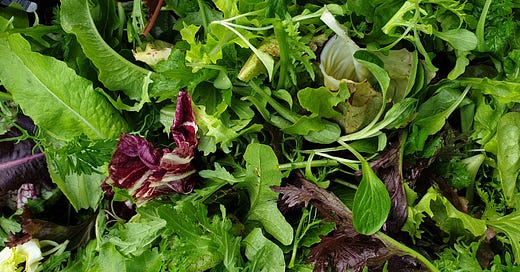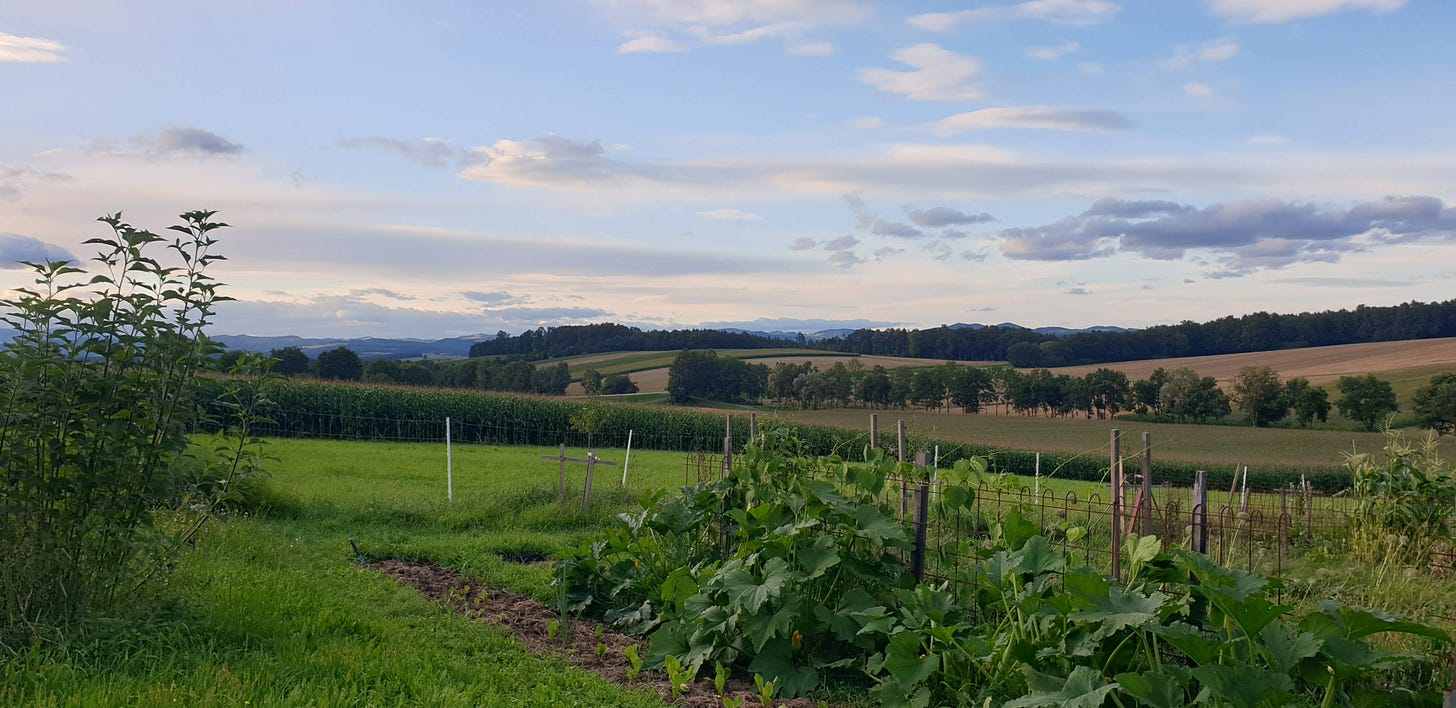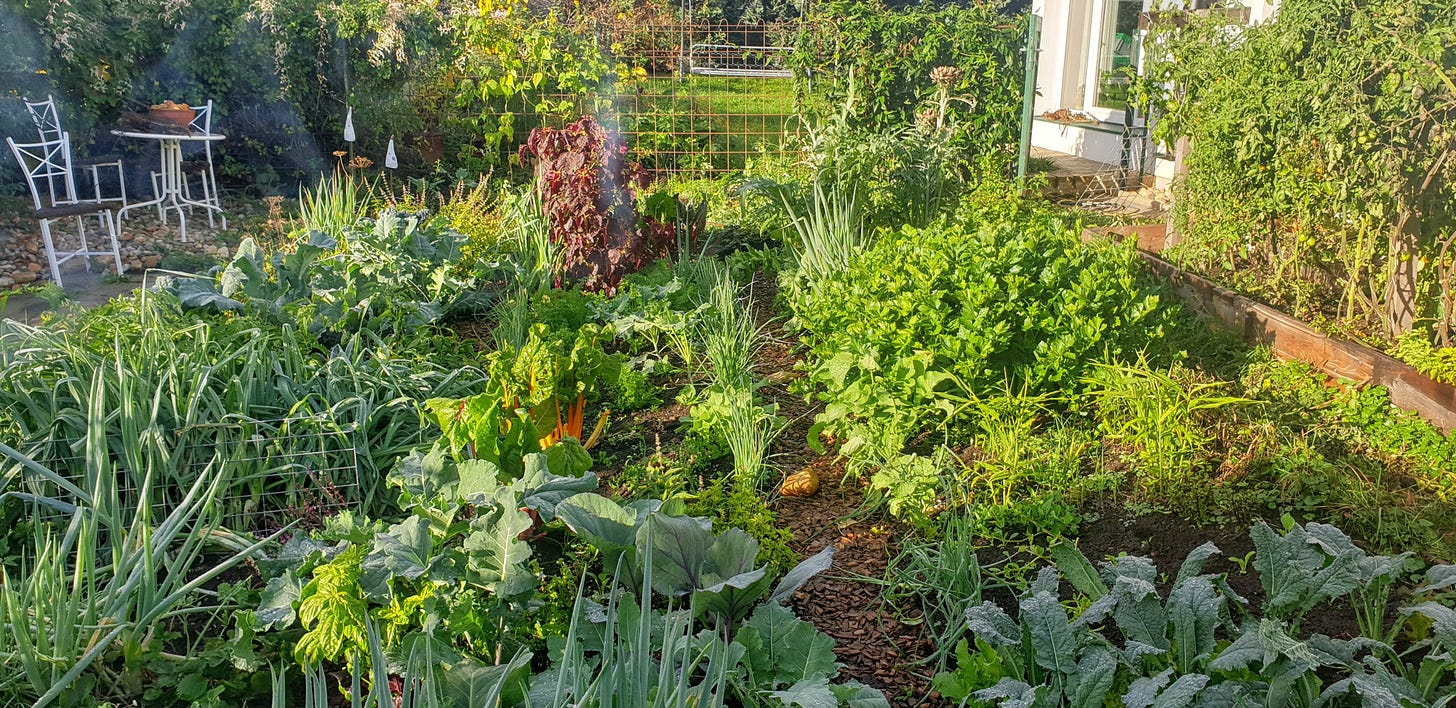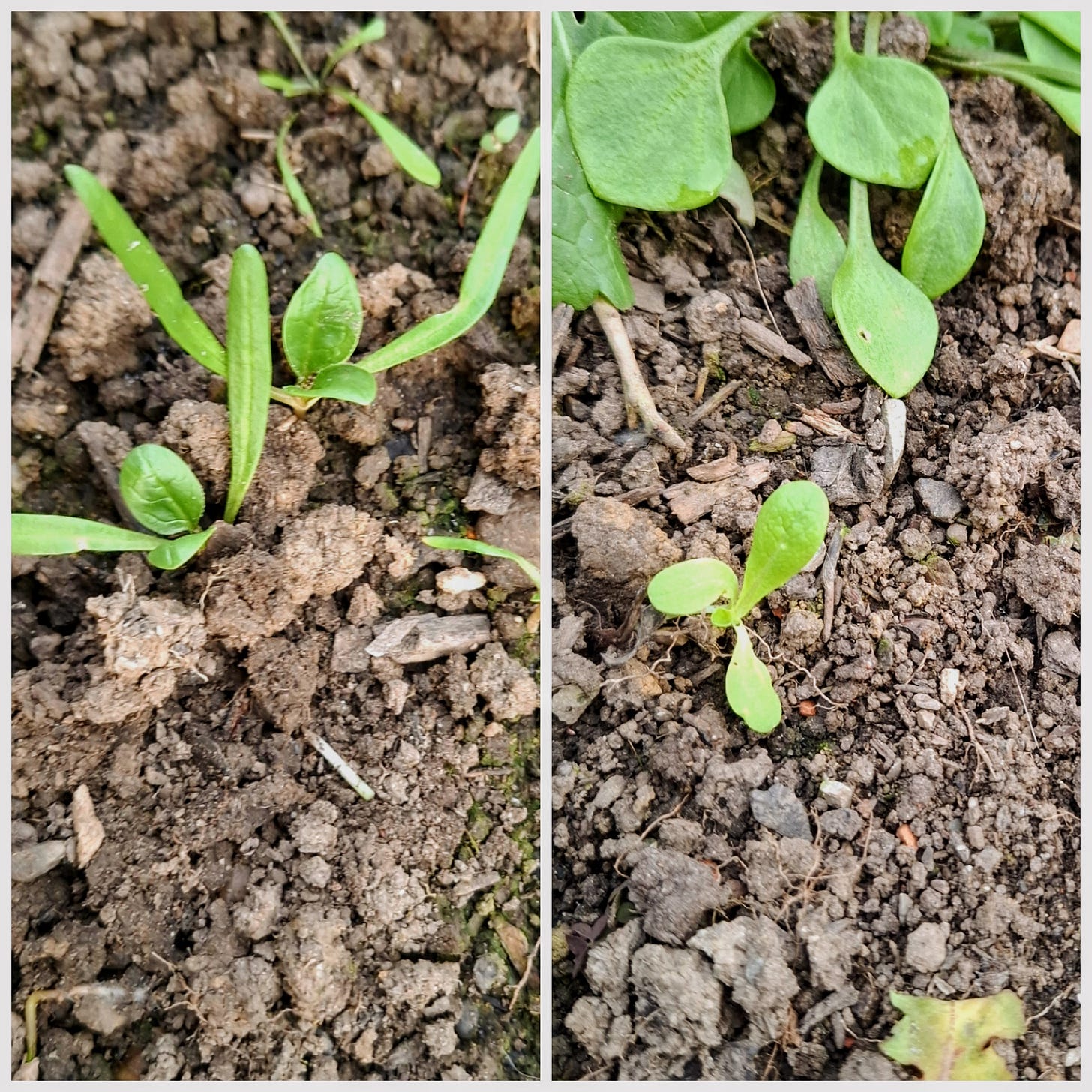It must be a good sign, the rain that started just as I began my first post on Substack. Here in southeastern Austria, where I live, it’s been a mild and very dry winter. Aside from a few foggy days that dusted everything with ice crystals in the morning, we haven’t had much precipitation - not good in a region that tends to be hot and dry in summer.
Too much rain isn’t ideal either. My gardens are blessed with heavy clay, so standing water is not uncommon if it rains too much too fast. It stresses the plants and encourages the slugs, a very poor combination.
Are you like that, too? When it’s sunny, one hopes for rain, and when it’s rainy, one longs for sun. Gardeners are hard to please, sometimes.
In case you’re wondering who I am
In this first posting, I’d like to introduce myself, which is always awkward. I’ve done so many things in my 50+ years on this planet, from computer programming to teaching English, that it might sound chaotic. A few highlights, which all belong to this one life of mine:
Grew up on a family farm in Wisconsin
Came to Austria to teach English and stayed
Speak German and (obviously) English
Supported Austrian school reform on the national level
Wrote textbooks for kids learning English at school
Conducted learning research at the University of Innsbruck
The one red thread through it all is gardening, though, from taking care of what today would be called a “homestead” garden on our Wisconsin farm to tending the rosebed of a rental place before we bought our first house.
After breaking my back (literally) in 2016, I asked myself what I’d most regret not having done, if I had died on those steep basement steps I’d fallen down, and the answer was immediate: Grow vegetables for others. Once the thought was there, there was no turning back. Two years later, I had made the radical change from a career in educational research and consulting to fulltime market gardening. That first market garden was in a stunning location above the Inn Valley in Tyrol and that 1/3 of an acre leased land felt like paradise. Since then, I’ve started a second market garden on my own land after moving from the Tyrolean Alps to southeastern Austria’s Burgenland, so my new paradise overlooks the rolling hills of a wine region.
Above: In my first market garden in the Austrian Alps, near Innsbruck. Below: The view in our backyard reminds me of Tuscany.
Teaching came naturally, so I gave courses and webinars soon after starting the first market garden. In our new location, I’ve always got new projects underway, like a learning garden and a personal kitchen garden, which serves as my demonstration garden and provides an astounding abundance on a relatively small space. (The links to my website are in German, but pictures know no language barrier.) School gardens are also one of my passions, but more on that in a later posting. The kitchen garden in early October:
So who am I? It might come down to this: An American abroad, living her best life, no matter how challenging it sometimes may be.
What am I doing in late January?
Well, aside from spending hours and hours to set up everything on Substack, we are at the tail-end of winter here, comparable to Zone 7a, so I’m mainly harvesting what I sowed back in fall. I love winter harvest for the ease (just pick and enjoy) and, above all, the flavors of cold-loving veg. I can’t imagine ever gardening just three out of four seasons again.
What I love most about winter is the salad mixes. I reached a bit of local fame with my seasonal mixes, a delight for the eye and the palate. They are especially complex, flavorful and delightful in winter - so much so that salad dressing becomes optional. The Christmas salad mix is my favorite, the one below composed of lettuces, rucola, radicchio, endive, Asian mustard greens, peppergrass cress, corn salad, chervil.
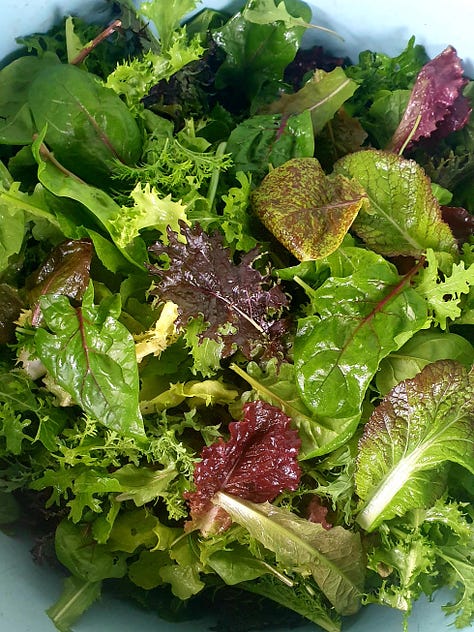
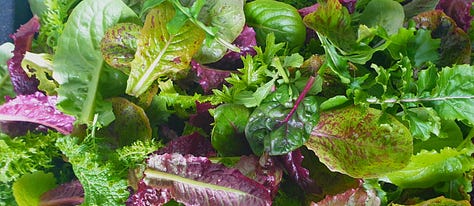

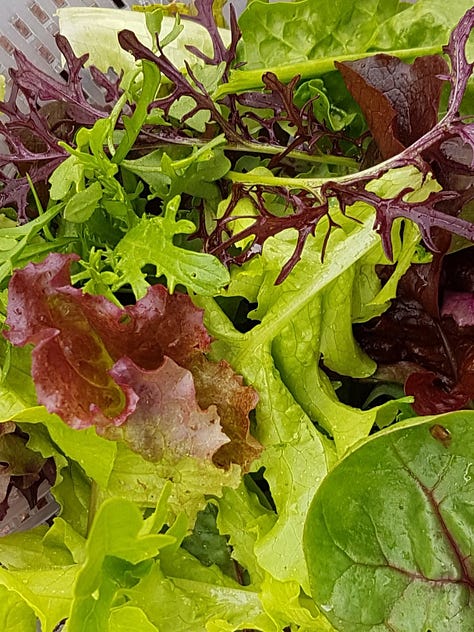
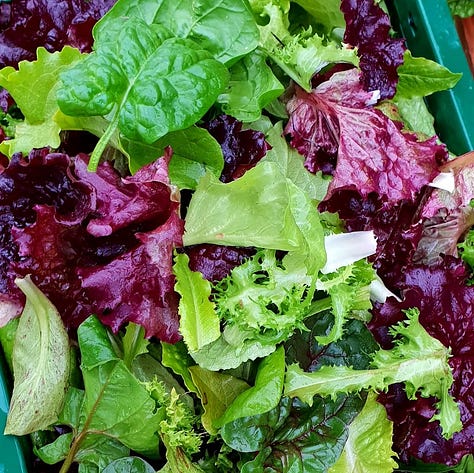

January is all about emptying the still-full garden to make room for late-sown seedlings coming into their own as well as spring plantings. I prefer to “prime” as many beds as I can, so that I can just rejoice when they sprout, and this works especially well with winter and spring greens. Right now, the spinach and lettuce sown in late November have made it through the worst and are starting to develop their first true leaves in the cold frame. I find that these tough little ones tend to bolt later than those I sow in early spring. In fact, I’ve altogether stopped sowing spinach in spring, with two sowings in early September for winter harvest and mid-November for spring harvest.
Of course, what I should be doing (and writing about) is organizing seeds, finalizing garden plans and preparing beds. Seeds and garden plans seem to happen on their, but preparing beds will be a bit of challenge. The market garden returned to a field last year while I was away recovering from pulmonary embolism. That’s a story for another day, but it does mean a new start. I’m not too worried about it, because I’ve done it before and have my favorite no-till strategies. This time, however, I’m thinking hard about an ideal design for me as I close in on my 60th birthday. I’ll be sure to report the results of my mulling it over in Sow, Harvest, Savor.
I won’t be starting transplants until mid-February because part of low-input gardening is reducing energy use to an absolute minimum. We are lucky to have a conservatory/sunroom, which heats up on sunny days and is kept temperate at night. There’s no shortage of sun here - hence, the happiness about rain - and it receives maximum light on the south corner of the house. By starting later I can do without grow lights and heating pads. To avoid leggy, weak seedlings, I start in mid-February with alliums (leeks, bunching onions, bulbing onions), lettuce, peppers, chilis, eggplant. The alliums and lettuce go straight to the cold frame before they start reaching for more light. Once they’ve germinated, the peppers, chilis and eggplant bathe in the sun and wind outside on mild days, but come in for the night.
A cold, dreary day in March, when only the warm-season starts are in the sunroom:
I have so much to share that I need to stop myself and close with one last photo. This is Mr. Moe, my garden helper. We’re both happiest when we’re out in the garden, especially together.
Let me know if you have particular topics you would like more of. And don’t forget to subscribe below to receive my free weekly newsletters. Have a great week!

